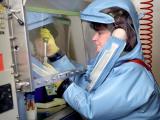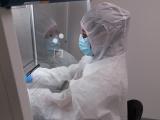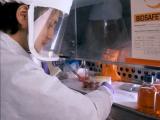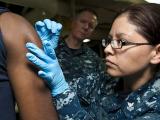Oct 17, 2003 (CIDRAP News) – The Food and Drug Administration today announced the release of a report to Congress on its progress toward developing faster tests to detect food contamination.
The report is in response to bioterrorism legislation passed in 2002, which requires the FDA to develop faster methods to detect contaminated foods and animal feed at US ports of entry, the agency said. The FDA has more than 90 active research projects dealing with test and sampling methods.
The report includes a lengthy chart describing the research projects. Following are some examples cited in the FDA's news release:
- The Center for Veterinary Medicine validated an analytical method using polymerase chain reaction tests to detect cattle-derived materials in animal feeds to ensure compliance with rules to protect the nation from bovine spongiform encephalopathy (mad cow disease).
- The Office of Regulatory Affairs (ORA) developed an immunoassary method for detecting botulinum toxin in food.
- The ORA developed a mass-spectrometry–based method for detecting a wide variety of chemical toxins in food.
FDA Commission Mark B. McClellan said, "The one-time allocation of $5 million provided last July by the Office of Management and Budget is allowing FDA to strengthen this research program. Because testing select agents in food represents a new filed of scientific inquiry, the research needs are quite substantial and will need to be sustained over several years."
Today the FDA also announced the launching of a Web site for registering foreign and domestic food facilities, also required by the 2002 bioterrorism law (the Public Health Security and Bioterrorism Preparedness and Response Act of 2002). The site was to be "live" at 6 p.m. EDT today.
The agency last week announced new rules for registration of food facilities and advance notice of food imports. The registration system is intended to help with quick identification and notification of food processors and other facilities involved in any deliberate or accidental contamination of food; the advance-notice requirement is designed to help the agency decide which food shipments to inspect. The rules take effect Dec 12.
See also:
FDA site for electronic registration of food facilities
http://www.fda.gov/Food/GuidanceRegulation/FoodFacilityRegistration/default.htm




















